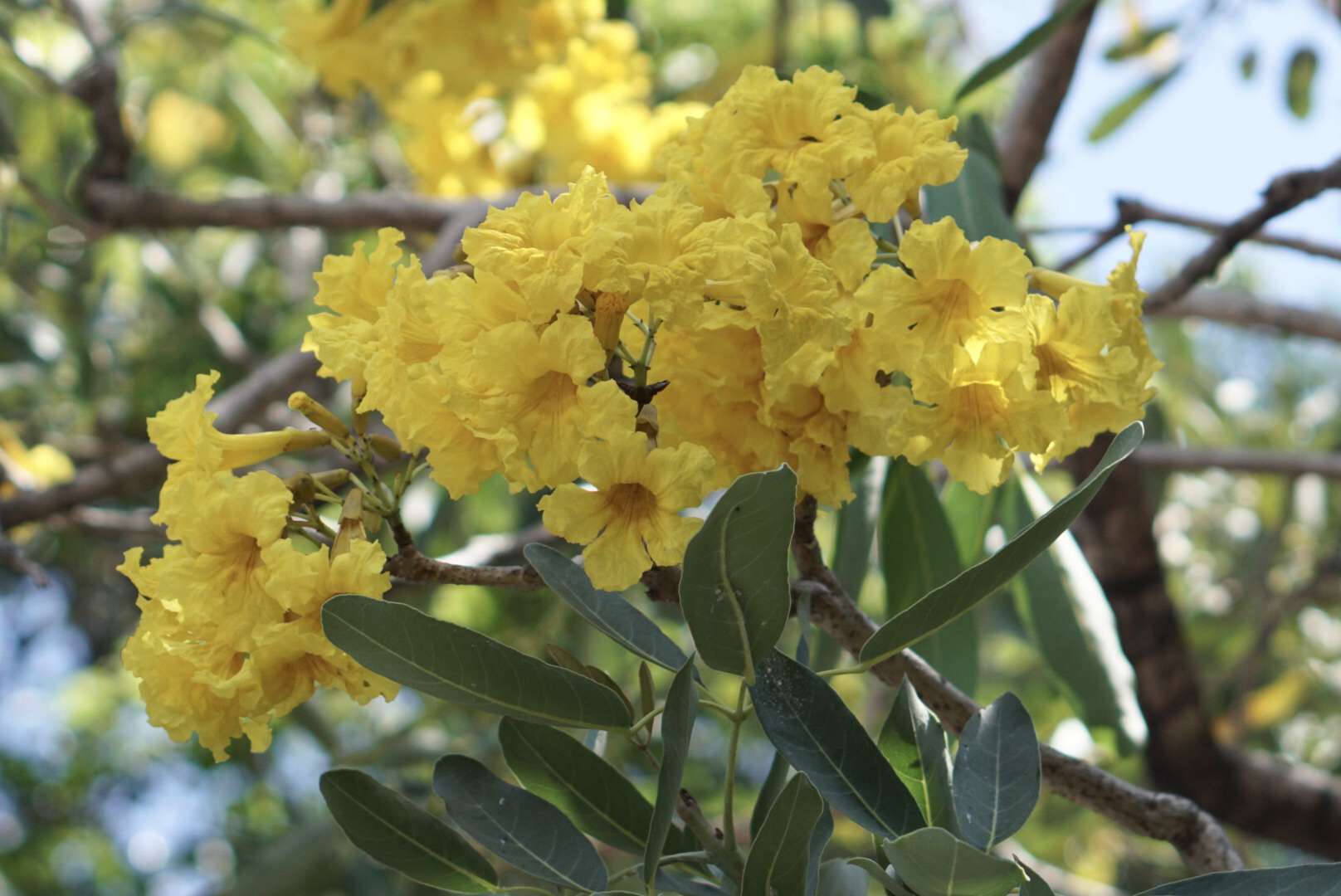
The Yellow Trumpetbush, scientifically known as Tecoma stans, is a fascinating plant that captivates with its vibrant yellow flowers and unique characteristics. Native to North and South America, this flowering shrub belongs to the Bignoniaceae family and is commonly found in tropical and subtropical regions. Its beautiful trumpet-shaped flowers and lush green foliage make it a favorite among gardeners and nature enthusiasts alike.
In this article, we will explore 10 intriguing facts about the Yellow Trumpetbush, from its symbolic significance to its medicinal properties and cultural uses. Whether you are a plant enthusiast or simply curious about the wonders of nature, join us as we delve into the enchanting world of the Yellow Trumpetbush.
Key Takeaways:
- Yellow Trumpetbush is a vibrant, fast-growing plant that attracts pollinators and wildlife. It’s easy to care for and has medicinal uses, making it a great addition to any garden.
- This evergreen shrub is native to the Americas and can thrive in various environments. Its bright yellow flowers and low maintenance nature make it a popular choice for ornamental gardens.
Vibrant Yellow Flowers
The Yellow Trumpetbush, scientifically known as Tecoma stans, is well-known for its beautiful clusters of vibrant yellow flowers that resemble trumpet shapes. These eye-catching blooms make the plant a popular choice for ornamental gardens and landscapes.
Native to the Americas
The Yellow Trumpetbush is native to various regions in the Americas, including parts of North America, Central America, and South America. Its natural habitat ranges from arid deserts to tropical rainforests, making it a versatile and adaptable plant species.
Attracts Pollinators
The bright yellow flowers of the Yellow Trumpetbush act as a magnet for pollinators such as bees, butterflies, and hummingbirds. These insects and birds are attracted to the abundant nectar produced by the flowers, helping to facilitate pollination and the continuation of the species.
Drought-Tolerant
Yellow Trumpetbush is known for its ability to thrive in dry or drought-prone areas. With its deep root system and tolerance for water scarcity, it can survive extended periods without regular watering, making it a resilient and low-maintenance plant choice.
Medicinal Uses
Various parts of the Yellow Trumpetbush, including its leaves, flowers, and roots, have been traditionally used for their medicinal properties. They are believed to have antimicrobial, anti-inflammatory, and diuretic effects, and have been used to treat conditions such as fever, cough, and urinary tract infections.
Evergreen Shrub
The Yellow Trumpetbush is an evergreen shrub, meaning it retains its foliage and remains green throughout the year. This makes it an excellent choice for adding color and beauty to landscapes, even during the winter months when many other plants may appear dull and lifeless.
Fast Growth Rate
Yellow Trumpetbush is known for its fast growth rate, with some varieties capable of growing up to 5 feet or more in a single year. Its rapid growth allows it to quickly establish itself and fill in garden spaces, providing privacy and creating an attractive green backdrop.
Easy to Propagate
Propagating Yellow Trumpetbush is relatively simple, as it can be easily grown from seeds, cuttings, or even by dividing mature plants. This makes it a popular choice among gardening enthusiasts and allows for the easy expansion of its presence in gardens and landscapes.
Nectar Source for Wildlife
Aside from attracting pollinators, the flowers of the Yellow Trumpetbush also serve as a valuable source of nectar for various wildlife species. Birds, bats, and insects, in addition to hummingbirds, often visit these flowers to feed, contributing to the overall biodiversity of the surrounding ecosystem.
Adaptable and Low Maintenance
Yellow Trumpetbush is known for its adaptability to different soil types and environments, as well as its resistance to pests and diseases. This makes it a relatively low-maintenance plant choice, ideal for both experienced gardeners and beginners looking to add beauty and interest to their outdoor spaces.
Conclusion
In conclusion, the Yellow Trumpetbush is a fascinating plant known for its vibrant yellow blooms and distinct trumpet-shaped flowers. It attracts hummingbirds and butterflies, adding a splash of color to any garden or landscape. Its medicinal properties and ability to adapt to various climates make it a sought-after plant for both gardeners and herbalists. Whether you’re looking to enhance the aesthetic appeal of your outdoor space or harness its therapeutic benefits, the Yellow Trumpetbush is a versatile and enchanting addition to any plant collection.
FAQs
Q: How tall does the Yellow Trumpetbush grow?
A: The Yellow Trumpetbush can grow up to 10 feet tall.
Q: Is the Yellow Trumpetbush a native plant?
A: While it is native to several parts of North and South America, it has been introduced to other regions due to its popularity.
Q: Does the Yellow Trumpetbush require a lot of sunlight?
A: Yes, the Yellow Trumpetbush thrives in full sun and requires at least 6-8 hours of direct sunlight per day.
Q: How often should I water the Yellow Trumpetbush?
A: It is important to water the plant regularly to keep the soil consistently moist. However, be cautious not to overwater as it can lead to root rot.
Q: Can I grow the Yellow Trumpetbush in a container?
A: Yes, the Yellow Trumpetbush can be grown in containers as long as they have proper drainage. Just ensure that the container is large enough to accommodate its growth.
Q: Does the Yellow Trumpetbush attract pollinators?
A: Yes, the bright yellow blooms of the Yellow Trumpetbush attract hummingbirds and butterflies, making it a pollinator-friendly plant.
Q: Does the Yellow Trumpetbush have any medicinal uses?
A: Yes, various parts of the plant have been used in traditional medicine to treat ailments such as fever, digestive issues, and inflammation.
Q: How can I propagate the Yellow Trumpetbush?
A: The Yellow Trumpetbush can be propagated through cuttings or by collecting and planting its seeds.
Q: Is the Yellow Trumpetbush a low-maintenance plant?
A: Yes, once established, the Yellow Trumpetbush is relatively low-maintenance, requiring minimal pruning and fertilization.
Q: Can I grow the Yellow Trumpetbush indoors?
A: While it is possible to grow the Yellow Trumpetbush indoors, it prefers outdoor conditions with ample sunlight and airflow.
Yellow Trumpetbush's captivating qualities make it a must-know for plant enthusiasts. Curious minds can explore more fascinating facts about flowering plants, like the enchanting Yellow Bells. Gardeners seeking drought-tolerant options will find Dymondia intriguing too. Each species has unique characteristics that contribute to nature's incredible diversity. Dive into the world of botany and uncover the remarkable stories behind these plants. Your newfound knowledge will deepen your appreciation for the natural world and inspire you to create a thriving, beautiful garden.
Was this page helpful?
Our commitment to delivering trustworthy and engaging content is at the heart of what we do. Each fact on our site is contributed by real users like you, bringing a wealth of diverse insights and information. To ensure the highest standards of accuracy and reliability, our dedicated editors meticulously review each submission. This process guarantees that the facts we share are not only fascinating but also credible. Trust in our commitment to quality and authenticity as you explore and learn with us.


